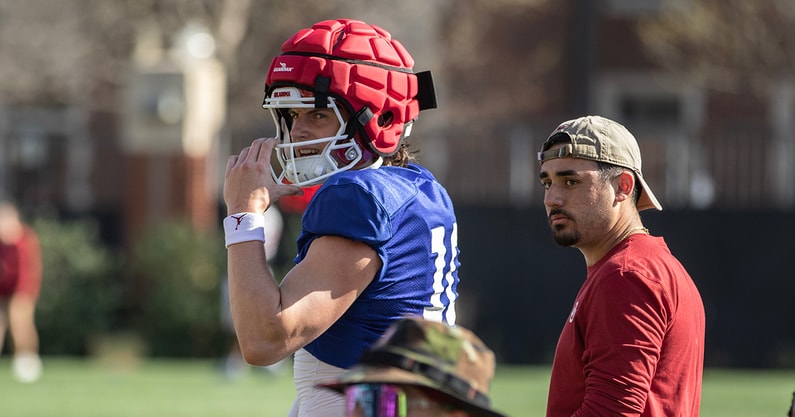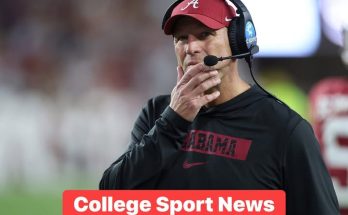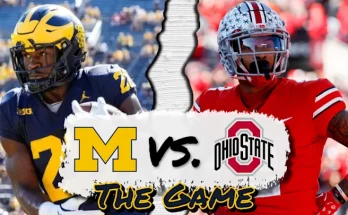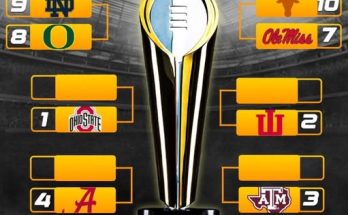The Oklahoma Sooners have long been one of college football’s most storied programs, boasting a rich history filled with national championships, Heisman Trophy winners, and a relentless drive for excellence. As the anticipation builds for College Football 26, fans and analysts alike are eager to see how the Sooners stack up in the latest team ratings and what that might mean for their trajectory in the coming seasons.
In recent years, Oklahoma has experienced both peaks of dominance and moments of transition. The program’s legacy is anchored by legendary coaches such as Bud Wilkinson, Barry Switzer, and Bob Stoops, each of whom helped shape the identity of Oklahoma football. Under Bob Stoops, the Sooners rose to the elite tier, capturing the 2000 national championship and consistently competing for Big 12 titles and College Football Playoff berths. More recently, the program has been in a rebuilding phase, adapting to new coaching staffs and evolving offensive and defensive philosophies. This dynamic context sets the stage for the Sooners’ placement in the College Football 26 ratings, where factors such as current roster talent, coaching impact, recruiting success, and program momentum all converge.
The team ratings in College Football 26 are generated through a blend of real-world data, projections based on recruiting classes, player development, and program strength. For a program like Oklahoma, which has a deep well of talent and a fervent fan base, expectations are naturally high. The rating system takes into account the overall depth of the roster, star power in key positions such as quarterback, offensive line, and defensive backfield, as well as intangible factors like team chemistry and coaching acumen. When examining the Sooners in this framework, it becomes clear that their placement in the ratings reflects both their potential and the challenges they face.
In terms of raw talent, the Sooners boast a roster with a strong blend of experienced upperclassmen and exciting young prospects. Oklahoma’s recruiting pipeline remains robust, consistently landing top-rated players from Texas, Oklahoma, and beyond. This sustained influx of high-caliber athletes fuels optimism about the team’s future, as well as confidence in their ability to compete at the highest levels. The quarterback position, historically a cornerstone for Oklahoma’s success, continues to be a focal point. The team’s signal-caller, backed by a solid offensive line and talented skill players, offers a dynamic and versatile offensive attack that can keep defenses on their heels.
Defensively, the Sooners have made strides in rebuilding after some tumultuous seasons. The College Football 26 ratings highlight improvements in their front seven and secondary, signaling a more balanced and formidable defense. The defensive coordinator’s ability to scheme effectively and maximize the talents of the roster is an important factor that bolsters Oklahoma’s rating. While there may still be questions about consistency and depth compared to some of the nation’s elite defensive units, the progress is undeniable.
One of the key considerations in the team ratings is coaching stability and strategy. The Sooners’ head coach has been tasked with reestablishing Oklahoma’s identity and guiding the program back into national championship contention. The coaching staff’s vision for a balanced offense combined with an aggressive defense aligns with the strengths of the current roster. Their approach to player development, in-game adjustments, and recruiting strategy all feed into the positive outlook represented in the College Football 26 ratings.
Looking at the competitive landscape within their conference and nationally, Oklahoma’s rating places them among the upper tier, though perhaps just shy of the absolute elite at the moment. This positioning reflects both respect for their historical stature and an acknowledgment of the challenges posed by rival programs who have also made significant strides. The Big 12 remains fiercely competitive, with several teams emerging as serious contenders. Oklahoma’s ability to navigate this environment, especially in key conference matchups, will be critical to improving their standing and capitalizing on their talent.
In comparison to other powerhouse programs, the Sooners sit comfortably within the top 15 teams in College Football 26, a testament to their continued relevance and potential for growth. This rating suggests they are a team on the cusp, with the tools to break into the top 10 with the right combination of player development, health, and strategic execution. Fans will be watching closely to see if the Sooners can leverage their strengths and overcome any weaknesses that might hold them back from championship contention.
The ratings also underscore the importance of intangible factors like leadership and experience. Oklahoma’s roster includes several veteran players who provide stability and a winning mentality, traits that can often be the difference in close games. The team’s culture, rooted in a tradition of toughness and resilience, helps foster a competitive spirit that is essential in high-stakes matchups. This intangible edge is reflected in the positive assessment within the ratings and bodes well for the Sooners as they approach the upcoming season.
Recruiting remains a cornerstone of Oklahoma’s long-term success, and College Football 26 projections show the program continuing to secure top-tier talent. The ratings factor in the impact of incoming freshmen and transfers, many of whom are expected to make immediate contributions. Oklahoma’s recruiting prowess, especially in the fertile talent grounds of Texas and Oklahoma, ensures a steady pipeline of elite athletes. This sustained recruiting success is a major reason why the Sooners maintain a high rating despite recent transitional phases.
The offensive scheme also plays a crucial role in the Sooners’ rating. Known for their innovative and high-scoring offenses, Oklahoma continues to build on this legacy with a modern twist. The coaching staff’s ability to adapt to evolving defensive trends, while maximizing the skills of their playmakers, has kept the Sooners’ offense dynamic and explosive. The College Football 26 ratings reflect confidence in this offensive approach, especially given the roster’s depth and versatility at key skill positions.
Special teams, often an overlooked component in team ratings, are also factored into the Sooners’ overall assessment. Oklahoma’s special teams units have shown improvement in recent years, providing better field position and critical plays that can swing momentum. This aspect, while subtle, enhances the team’s overall rating and complements their offensive and defensive strengths.
Injuries and depth are always concerns in college football, and the ratings take into account the durability and backup talent of the Sooners. Fortunately, Oklahoma’s depth chart shows promising backups who have gained experience in rotation roles. This depth will be crucial in maintaining performance over a grueling season, allowing the team to withstand the inevitable attrition that comes with competitive play.
Another element influencing the ratings is the Sooners’ performance in high-profile games and bowl appearances. Historically, Oklahoma has been a regular participant in marquee matchups, which tests the team’s ability to perform under pressure. The College Football 26 ratings recognize this track record, lending credibility to the program’s ability to rise to the occasion when it matters most. As they continue to schedule and compete against top opponents, the Sooners’ ratings are likely to reflect any success or setbacks in these key contests.
When considering the fan base and support structure, Oklahoma enjoys one of the most passionate and loyal followings in college football. The energy and atmosphere generated by this fan base contribute to a formidable home-field advantage. The program’s financial resources and facilities are also among the best in the country, allowing for top-tier training environments and recruitment appeal. These factors are integrated into the overall rating, illustrating how off-field elements support on-field success.
The media and analyst community’s perception of Oklahoma also feeds into the rating system. While some critics have questioned whether the program can reclaim its past dominance quickly, the general consensus is optimistic. The talent, coaching, and institutional support all point toward a bright future. The College Football 26 ratings reflect this optimism but maintain a realistic view of the challenges ahead.
Looking ahead, the Sooners’ trajectory in the ratings will depend heavily on how well they execute their game plans and develop young talent throughout the season. Key games against ranked opponents will serve as benchmarks to assess their progress. If the Sooners can string together a series of wins and demonstrate consistent improvement, their rating is likely to rise, putting them firmly in the conversation for College Football Playoff contention.



